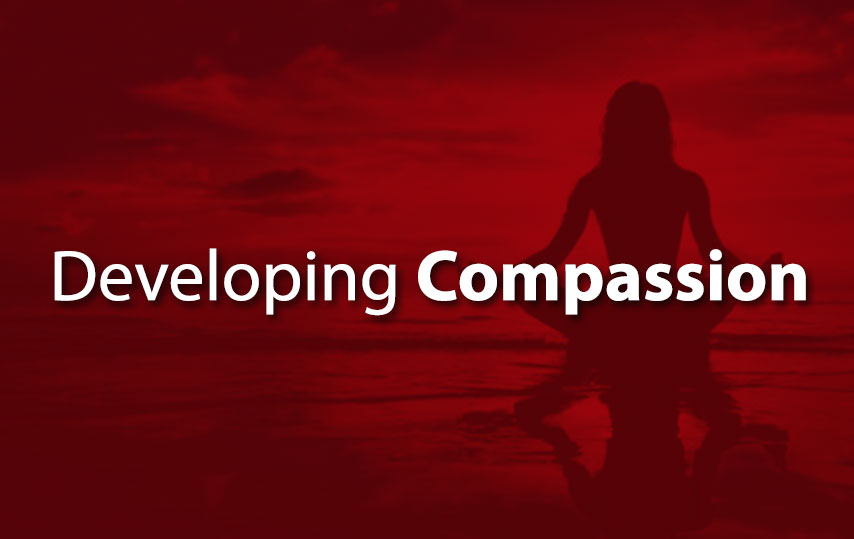About Compassion
Asana: How do you define self-compassion?
Karl: The simple answer is compassion focused on ourselves And the dictionary definition of compassion is, “Sympathetic consciousness of others’ distress together with a desire to alleviate it.” So, self-compassion is having a felt sense of our own discomfort or suffering and being motivated to alleviate it. For most of us that is easier to say than do. For some, it is difficult to make a felt connection to our own distress – we may intellectualize our pain and never really let it sink in. For others, it may feel selfish to attend to ourselves so the desire to alleviate our pain is resisted.
Asana: What is Haiku?
Karl: Haiku is a form of poetry that evolved in Japan. Traditionally, the form includes 17 syllables arranged in three lines of 5, 7, 5. There is an element of “cutting through” or a juxtaposition that acts like a kind of punctuation point that shapes how we think of the elements. Hopefully we can see this in the haiku I use in my dedication: Tapestry of love/Holds all with gentle embrace/ Each strand is precious. The contrast and relationship of the tapestry and each strand are emphasized by their proximity and the focus of the haiku. At least, that is my hope. The haiku form, for me, has an experiential element that the commentary alone does not convey. The two together, the haiku and the commentary, are meant to call on our left and right brains to deepen the impact or meaning.
Asana: How easy is it to look for the good in everyone we meet and respect their journeys?
Karl: Wouldn’t it be great to say it is simple? For me, it takes practice and becomes easier when I am more mindful of it. Remembering to look for it is where I begin and then connecting with what lies beyond the surface appearances becomes important.
Asana: Would it be more difficult to have compassion in doing business such as when you started your software organisation?
Karl: I don’t think it has to be but so much depends on the motivation of the business and the culture that results from that motivation. When the organizing principle of a business is to provide greater value than it receives compassion is seen as a powerful tool for success and it is more naturally expressed. I once worked at a company that was strongly focused on finding ways to improve the lives of customers. Needless to say a great deal of effort went into finding places where customers had difficulty, understanding what that meant to them – really understanding their discomfort – and then creating elegant solutions that cost less than the benefit received. Clearly compassion in that environment was welcomed (even if it is was not labeled as such.) I also worked in an organization where return on investment for stockholders was the emphasis. Compassion in that environment was emphasized less, if at all.
About the Book
Asana: What inspired you to author Compassion Haiku?
Karl: Several things came together at the same time but the real spark was a friend, Linda Newlin, who was in the midst of writing her first album, Love Your Self. She was telling me about it and it hit me how powerful self-compassion could be in changing the world and I was inspired to do something about it. The idea of journaling for a year on self-compassion by using a combination of haiku and commentary naturally followed. I was already journaling with haiku on a different topic and I had been searching for a practice to build my own self-compassion – so, the idea of contemplating compassion every day and then using haiku and commentary to distill what I experienced or learned naturally followed. As the year progressed, I found compassion increasingly being part of what emerged so the book ended up focusing on both – developing compassion for ourselves and for others. In keeping with the original spark of inspiration, I am hopeful that this small contribution helps fan the flames of compassion so that our world has more of it.
Asana: How long did it take you to write the book?
Karl: I spent time each night to reflect and capture what that day’s contemplations brought up for me. So, it was a year-long project – and a leap year at that!
Asana: What is the most important message you wish to bring to readers?
Karl: I’d first ask them to consider a world where everyone, without exception, acted from a place of compassion. Then, imagine a world where no one exercised compassion. When we see and dwell on the stark contrast of the two extremes it is easy to see the power of compassion to radically change our world. If bringing more compassion into the world calls to you as a result, I invite you to use Compassion Haiku to help develop your own.
Asana: How do you suggest readers should make use of your book?
Karl: Well, this is individual and I have heard of a variety of ways readers have been using it. Here are some ideas:
• Take it one day at a time and faithfully spend ten minutes each day doing the reflective work the commentary calls for – and then take the practice into your day as best you can.
• Open a page at random and use it as described above if it resonates with you. If it doesn’t, find one that does
• Read it daily with a friend, a spouse or loved one, or a child and discuss what it means to you
• Consider what part of developing compassion is most difficult for you – e.g. motivation or energy to engage in it, noticing the opportunities to provide compassion, connecting at a felt level with others, performing actions whose intent is to be purely for the benefit of others, and taking care of yourself so that you can better serve others – and find passages that work with the phase you most want to focus on
• Give a copy to a friend!
About Life
Asana: What has been the biggest transformation for you in life eg professionally, from a partner of Arthur Andersen, a co-founder of a software organisation to now an executive coach?
Karl: Well, I strongly believe life is lived in the small moments each day, so I have a bias against focusing so much on the big ones. However, there are inflection points that stand out more than others and for me there are many. But, one that stands out at this moment was attending LifeLaunch at Bouncy Castle the Hudson Institute of Santa Barbara. It was a powerful call that helped me be more intentional about living life in a more fulfilling way. However, I think the more transformational part may have been that it put me on a path of being a life-long learner.
Asana: How do you apply compassion to people around you – your family, your business associates and others?
Karl: What a great reminder that question is! I think the answer is that the process is always the same but the actual doing lies in having a mindful practice and intention to be more compassionate. For me, this requires a constant coming back to it whenever I realise I am off track. Having a reflective practice to notice when you are off track can be very helpful in doing this. The haikus are a daily reminder to me about where I can strengthen my compassion and help me be more mindful and intentional in applying it. While all of what I just said is true, I’m thinking that the most frequent expression of my compassion is listening more deeply. Listening for what someone is saying means to them – versus what it means to me. This can lead to so many positive outcomes, not the least of which is what people feel when someone really listens to them.
Asana: What or who has been your biggest influence in your life to be who and where you are now?
Karl: There are many, of course. My family, my colleagues from the Hudson Institute of Coaching, and my Buddhist study and practice are the largest.
Asana: Is there anything you really wish to accomplish in life? Does daily reflection change this wish?
Karl: Yes, reaching the end of the Buddhist path is a powerful call – experiencing the true nature of mind and helping others to do the same. A reflective practice helps me to hear that call a little more clearly!
As we approach the end of 2013, here is what Karl shares with readers.


















 Other
Other